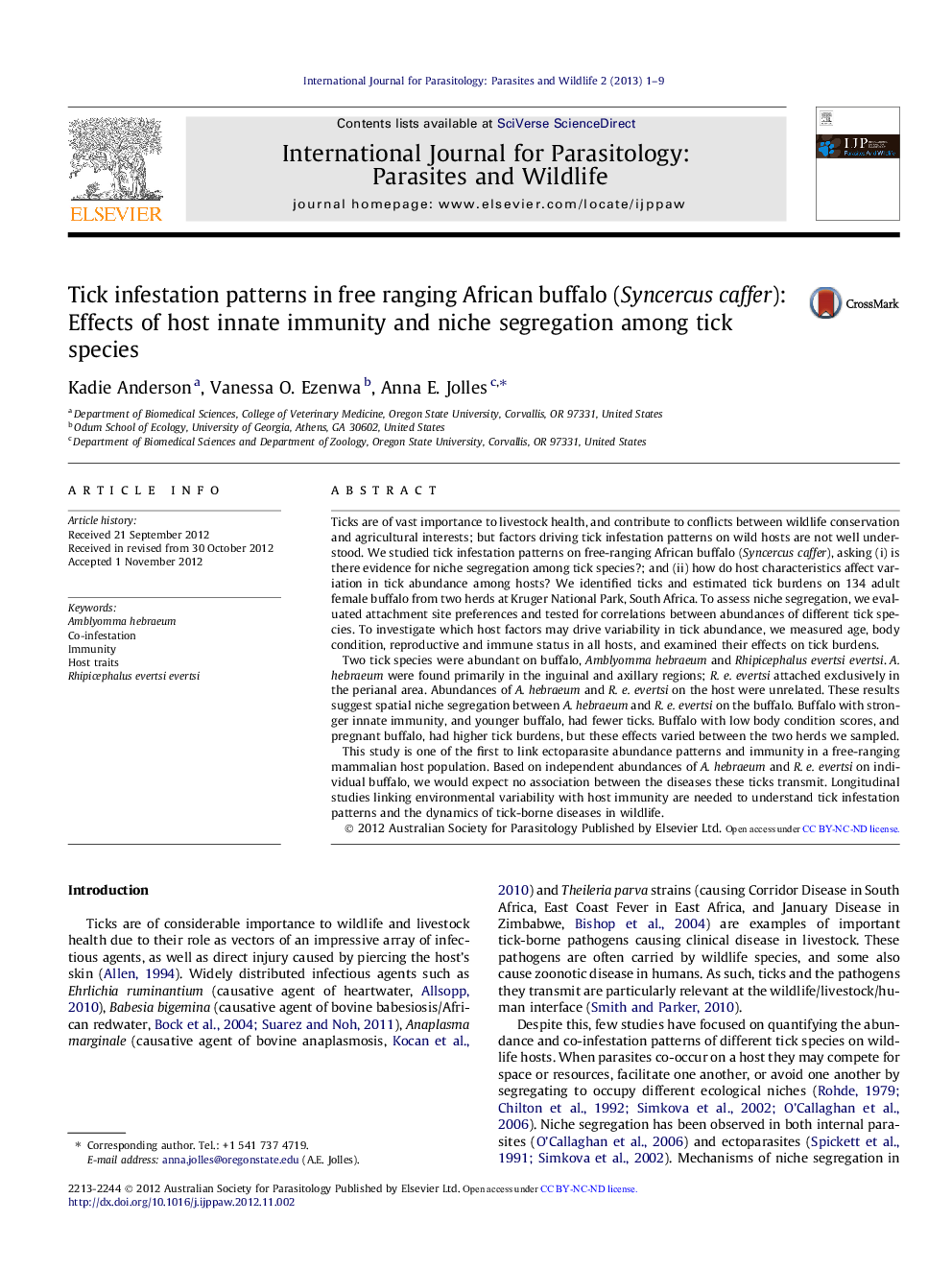| Article ID | Journal | Published Year | Pages | File Type |
|---|---|---|---|---|
| 2055269 | International Journal for Parasitology: Parasites and Wildlife | 2013 | 9 Pages |
Ticks are of vast importance to livestock health, and contribute to conflicts between wildlife conservation and agricultural interests; but factors driving tick infestation patterns on wild hosts are not well understood. We studied tick infestation patterns on free-ranging African buffalo (Syncercus caffer), asking (i) is there evidence for niche segregation among tick species?; and (ii) how do host characteristics affect variation in tick abundance among hosts? We identified ticks and estimated tick burdens on 134 adult female buffalo from two herds at Kruger National Park, South Africa. To assess niche segregation, we evaluated attachment site preferences and tested for correlations between abundances of different tick species. To investigate which host factors may drive variability in tick abundance, we measured age, body condition, reproductive and immune status in all hosts, and examined their effects on tick burdens.Two tick species were abundant on buffalo, Amblyomma hebraeum and Rhipicephalus evertsi evertsi. A. hebraeum were found primarily in the inguinal and axillary regions; R. e. evertsi attached exclusively in the perianal area. Abundances of A. hebraeum and R. e. evertsi on the host were unrelated. These results suggest spatial niche segregation between A. hebraeum and R. e. evertsi on the buffalo. Buffalo with stronger innate immunity, and younger buffalo, had fewer ticks. Buffalo with low body condition scores, and pregnant buffalo, had higher tick burdens, but these effects varied between the two herds we sampled.This study is one of the first to link ectoparasite abundance patterns and immunity in a free-ranging mammalian host population. Based on independent abundances of A. hebraeum and R. e. evertsi on individual buffalo, we would expect no association between the diseases these ticks transmit. Longitudinal studies linking environmental variability with host immunity are needed to understand tick infestation patterns and the dynamics of tick-borne diseases in wildlife.
Graphical abstractFigure optionsDownload full-size imageDownload as PowerPoint slideHighlights► Rhipicephalus evertsi evertsi and Amblyomma hebraeum are abundant on wild African buffalo. ► The two tick species do not affect each other’s abundance. ► Strong differences in attachment site preference suggest spatial niche segregation. ► Host traits (immunity, age, pregnancy status, body condition) drive tick abundance. ► Buffalo with stronger innate immunity have fewer ticks.
